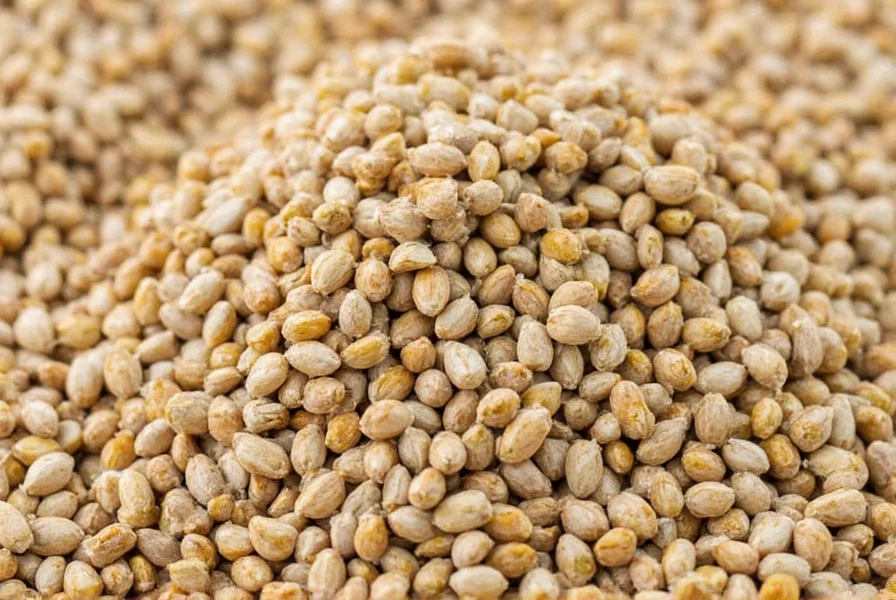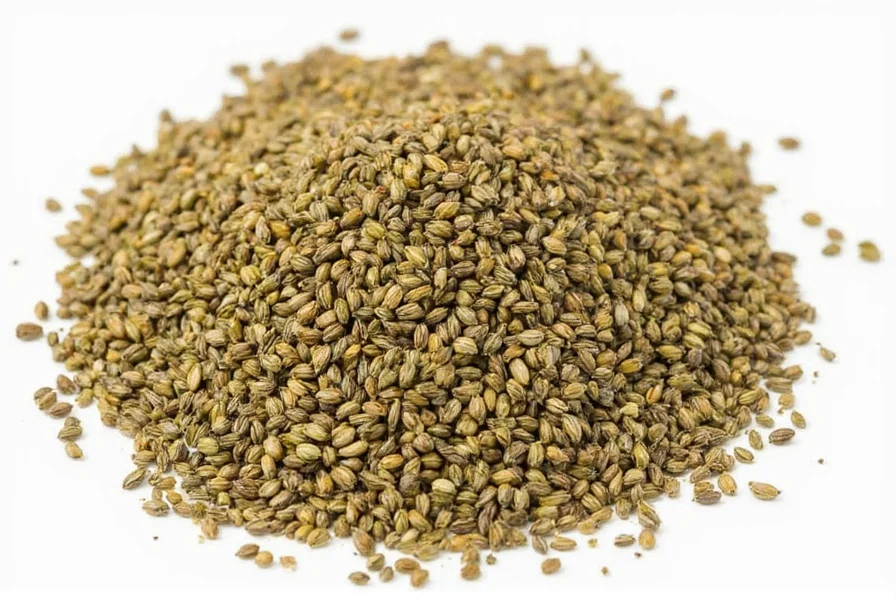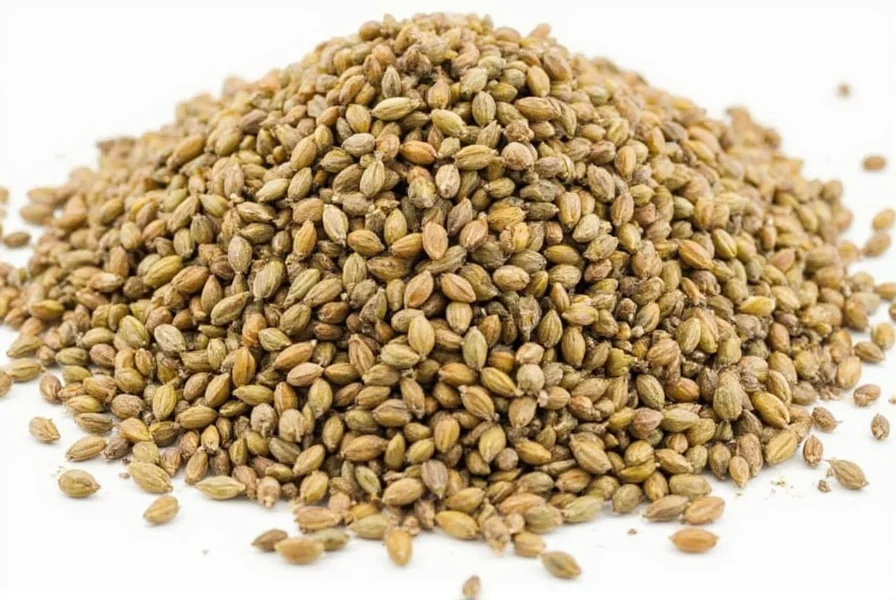Running out of coriander seeds mid-recipe doesn't have to ruin your cooking. This versatile spice, with its citrusy, slightly sweet flavor, appears in countless global cuisines from Indian curries to Middle Eastern rubs. When you need a substitute for coriander seeds, understanding flavor profiles and proper ratios ensures your dish maintains balance without compromising authenticity.
Understanding Coriander Seeds' Unique Flavor Profile
Before exploring substitutes, recognize what makes coriander seeds special. These dried fruit of the cilantro plant offer a distinctive warm, citrusy aroma with subtle floral notes and a hint of peppery sweetness. When toasted, they develop nutty undertones that enhance complex spice blends. This unique combination explains why finding the right coriander seeds alternative requires careful consideration of your specific recipe.
Top 5 Substitutes for Coriander Seeds
1. Cumin: The Closest Flavor Match
Cumin provides earthy warmth with a lemony note that mimics coriander's citrus elements, though it's more pungent and less sweet. Use 3/4 teaspoon ground cumin for every 1 teaspoon of coriander seeds. Best for savory dishes like chili, taco seasoning, or Indian curries where you want to maintain depth without overwhelming the dish. Remember that cumin's stronger flavor means you should start with less and adjust to taste.

2. Caraway Seeds: For European and Eastern European Dishes
Caraway offers a similar earthy base with pronounced anise notes. While not identical, it works well in rye bread, sauerkraut, and goulash recipes that call for coriander. Use a 1:1 ratio when substituting caraway for coriander seeds. The key difference lies in caraway's stronger licorice flavor, so consider reducing other anise-family spices in your recipe when making this substitution.
3. Fennel Seeds: The Sweet Alternative
Fennel seeds provide the closest match to coriander's citrus notes with their natural sweetness and mild licorice flavor. Substitute fennel seeds at a 1:1 ratio in Mediterranean dishes, fish recipes, or vegetable roasts. For Indian recipes, pair fennel with a pinch of cumin to better approximate coriander's complexity. Toasting fennel seeds before use enhances their similarity to toasted coriander.
4. Garam Masala: The Blend Solution
Since coriander appears in most garam masala blends, this spice mix makes an excellent substitute. Use 1/2 teaspoon garam masala for every 1 teaspoon coriander seeds. This works particularly well in Indian and Middle Eastern dishes where coriander is just one component of a larger spice profile. Be mindful that garam masala contains other warming spices, so you may want to reduce additional cinnamon or cloves in your recipe.
5. Coriander Powder: The Direct Replacement
When you need a substitute for coriander seeds and have ground coriander available, use it at a 1:1 ratio. While convenient, understand that ground coriander lacks the toasted depth of whole seeds. For better results, toast the powder in a dry skillet for 30 seconds before adding to your dish. This method works best in sauces and stews where texture matters less than in dry rubs or breads.
| Substitute | Ratio | Best For | Flavor Difference |
|---|---|---|---|
| Cumin | 3/4 tsp : 1 tsp | Chili, curries, taco seasoning | More earthy, less citrusy |
| Caraway seeds | 1:1 | Rye bread, sauerkraut, goulash | Stronger anise notes |
| Fennel seeds | 1:1 | Mediterranean dishes, fish recipes | Sweeter, more licorice-like |
| Garam masala | 1/2 tsp : 1 tsp | Indian curries, stews | Contains additional warming spices |
| Coriander powder | 1:1 | Sauces, stews, wet dishes | Less complex, no toasted depth |
Choosing the Right Substitute Based on Your Recipe
The best coriander seeds alternative depends entirely on your specific dish. For Indian cooking, cumin combined with a pinch of fennel provides the most authentic flavor profile. When making Middle Eastern dishes like za'atar or baharat, caraway works better than cumin. For baking applications like rye bread or spice cakes, fennel seeds create the closest flavor match.
Consider these factors when selecting your substitute for coriander seeds:
- Liquid vs. dry dishes - Powdered substitutes work better in wet recipes
- Toastability - Whole seed substitutes can be toasted for enhanced flavor
- Other spices present - Adjust complementary spices when changing your base
- Cultural authenticity - Some substitutes work better in specific regional cuisines
Common Substitution Mistakes to Avoid
Many home cooks make these errors when replacing coriander seeds:
- Using equal amounts of cumin without adjusting for its stronger flavor
- Substituting fresh cilantro for coriander seeds (they're related but have completely different flavor profiles)
- Not toasting seed substitutes to enhance their similarity to toasted coriander
- Using pre-mixed curry powder as a direct substitute (it contains many additional spices)
Remember that the best substitute for coriander seeds in recipes often involves combining two spices. For example, mixing equal parts cumin and fennel seeds creates a more accurate flavor profile than using either alone. Start with smaller amounts than the recipe specifies, then adjust to taste after the dish has simmered.
Practical Tips for Successful Substitution
When you need a last-minute coriander seeds alternative, follow these professional chef techniques:
- Toast your substitute - Heat seeds in a dry skillet for 1-2 minutes until fragrant
- Grind just before use - Maximizes flavor when substituting whole seeds
- Add substitutes later - Since they lack coriander's complexity, add them toward the end of cooking
- Balance with acid - A squeeze of lemon can mimic coriander's citrus notes
For the most authentic results when replacing coriander seeds in Indian cooking, combine 1/2 teaspoon cumin with 1/4 teaspoon fennel seeds for every teaspoon of coriander called for. This blend captures both the earthy and citrus elements that make coriander unique in curry powders and masalas.

Frequently Asked Questions
Can I use cilantro instead of coriander seeds?
No, fresh cilantro and coriander seeds come from the same plant but have completely different flavor profiles. Cilantro has a bright, grassy taste while coriander seeds offer warm citrus notes. Use cumin or fennel seeds instead when substituting for coriander seeds.
What's the best substitute for coriander seeds in curry?
For Indian curries, combine 1/2 teaspoon cumin with 1/4 teaspoon fennel seeds for every teaspoon of coriander seeds required. This blend captures both the earthy and citrus elements essential to authentic curry flavor without coriander seeds.
How do I substitute coriander powder for whole seeds?
Use coriander powder at a 1:1 ratio when replacing whole coriander seeds, but toast the powder in a dry skillet for 30 seconds first to enhance flavor. Keep in mind that ground coriander lacks the toasted depth of whole seeds, so you may need to increase the amount by 25% for stronger dishes.
Can I skip coriander seeds entirely in a recipe?
You can omit coriander seeds, but your dish will lack its distinctive citrusy warmth. If skipping entirely, add 1/4 teaspoon lemon zest plus a pinch of cumin to approximate coriander's flavor profile. This works best in dishes with multiple spices where coriander isn't the dominant flavor.
Why do recipes specify whole coriander seeds instead of ground?
Whole coriander seeds retain their complex flavor longer and develop deeper notes when toasted. Recipes call for whole seeds when texture matters (like in pickling brines) or when the spice needs to bloom in oil at the beginning of cooking. Ground coriander works better in wet dishes where texture isn't important.











 浙公网安备
33010002000092号
浙公网安备
33010002000092号 浙B2-20120091-4
浙B2-20120091-4